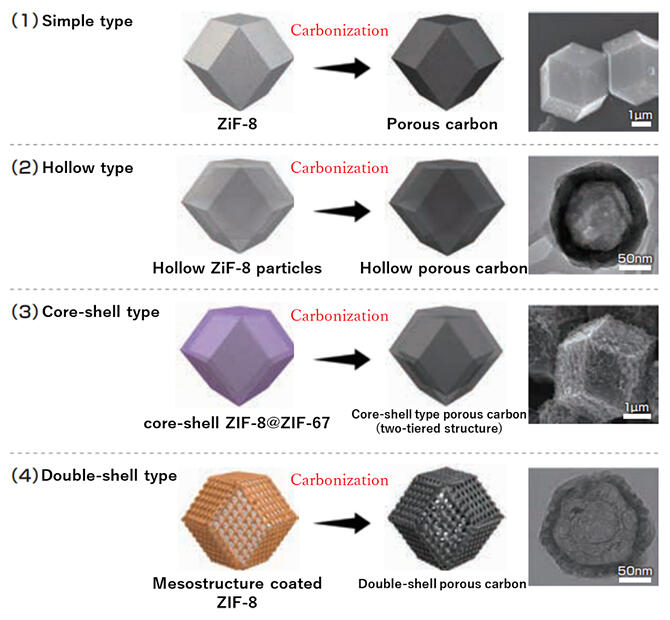Research on carbon-containing materials for application in the energy and environmental fields is ongoing, as these materials are highly thermally and chemically stable, lightweight, and have superior electrical conductivity. A drawback of very small nanocarbon materials, typified by carbon nanotubes and graphene, is that the effective surface area gets smaller when they aggregate, reducing their functionality. Methods using porous carbon materials, which have a large surface area, have been explored for this reason, but achieving a uniform particle morphology with existing synthesis methods has been difficult.
A research team led by Professor Yusuke Yamauchi, Guest Senior Researcher and Visiting Professor at the Faculty of Science and Engineering, Waseda University, has established a methodology for synthesizing porous carbon particles by direct carbonization of metal-organic framework (MOF) particles used as the starting materials. Etching the interior of MOF particles or applying a coating to the surface of the MOF particles made of MOF particles of a different composition enables a high degree of control over the morphology and the pore structure.
The researchers also classified porous carbon materials into four types, and developed methodologies for synthesizing each type of carbon material. Furthermore, the results of the experiments confirmed that the yield of the porous carbon materials for the MOF starting materials was about 30 to 50%, and the synthesized product was also carbonaceous, consisting of about 90% or more carbon atoms. Until now, the low chemical stability and electrical conductivity of MOFs has rendered them unsuitable for electrochemical applications. However, this newly established method for direct carbonization of MOFs has the potential to overcome these disadvantages, and it expected to have applications including storage batteries and catalysts.





